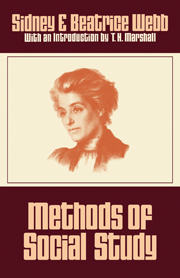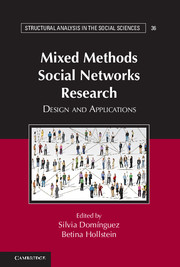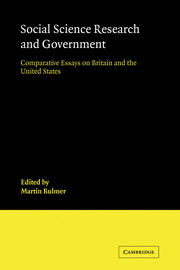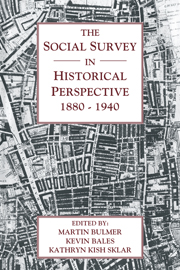Illuminating Dark Networks
The Study of Clandestine Groups and Organizations
CAD$123.95 (C)
Part of Structural Analysis in the Social Sciences
- Editor: Luke M. Gerdes, United States Military Academy
- Date Published: July 2015
- availability: Available
- format: Hardback
- isbn: 9781107102699
CAD$
123.95
(C)
Hardback
Other available formats:
eBook
Looking for an examination copy?
This title is not currently available for examination. However, if you are interested in the title for your course we can consider offering an examination copy. To register your interest please contact collegesales@cambridge.org providing details of the course you are teaching.
-
Some of the most important international security threats stem from terror groups, criminal enterprises, and other violent non-state actors (VNSAs). Because these groups are often structured as complex, dark networks, analysts have begun to use network science to study them. However, standard network tools were originally developed to examine companies, friendship groups, and other transparent networks. The inherently clandestine nature of dark networks dictates that conventional analytical tools do not always apply. Data on dark networks is incomplete, inaccurate, and often just difficult to find. Moreover, dark networks are often organized to undertake fundamentally different tasks than transparent networks, so resources and information may follow different paths through these two types of organizations. Given the distinctive characteristics of dark networks, unique tools and methods are needed to understand these structures. Illuminating Dark Networks explores the state-of-the art in methods to study and understand dark networks.
Read more- Describes new tools to study big data that will appeal to researchers attempting to understand extremist groups' use of social media
- Describes context-specific means to conduct measurement in dark networks
- Explores theoretical issues in the application of network method to the study of clandestine groups
Reviews & endorsements
"Social network analysis is now a well-established paradigm within the social sciences and has been successfully applied to various types of relational data. However, until now, too little attention has been paid to how it should be applied to dark networks. Illuminating Dark Networks brings together leading academics, military researchers, and civilian analysts to provide the reader with the latest thinking on how to collect, analyse, and understand clandestine networks. Challenging traditional thinking and proposing new methods and ideas, this volume is timely, informative, and engaging."
Martin Everett, Chair in Social Network Analysis, Mitchell Centre, University of ManchesterSee more reviews"Illuminating Dark Networks: The Study of Clandestine Groups and Organizations is a rare book title in that it conveys exactly what the book actually delivers. Drawing on work from some of the best researchers in this area, both from the policy world and academia, across fields as diverse as sociology, statistics, and computer science, this edited volume makes an important contribution to our understanding of dark networks and how to study them."
Victor Asal, University at Albany, State University of New YorkCustomer reviews
Not yet reviewed
Be the first to review
Review was not posted due to profanity
×Product details
- Date Published: July 2015
- format: Hardback
- isbn: 9781107102699
- length: 276 pages
- dimensions: 236 x 160 x 24 mm
- weight: 0.57kg
- contains: 71 b/w illus. 27 tables
- availability: Available
Table of Contents
Introduction Luke M. Gerdes
1. Covert network analysis: an exchange network theory perspective Elisa Jayne Bienenstock and Michael Salwen
2. Dark dimensions: classifying relationships among clandestine actors Luke M. Gerdes
3. Disrupting and dismantling dark networks: lessons from social network analysis and law enforcement simulations David A. Bright
4. The methodological challenges of extracting dark networks: minimizing false positives through ethnography Michael Kenney and Stephen Coulthart
5. Detecting dark networks using geo-temporal and pattern based network analysis techniques Rich La Valley, Abe Usher and Alexander Halman
6. LookingGlass: a visual intelligence platform for tracking social movements Hasan Davulcu and Mark Woodward
7. Open source exploitation for understanding covert networks Kathleen M. Carley
8. Simulating and analyzing dark networks: modeling and measuring using network tools David C. Arney, Jocelyn R. Bell, Kathryn A. Coronges and Greg Merkl
9. Criminal social network intelligence analysis with the GANG software Paulo Shakarian, Michael Martin, John Bertetto, Bradley Fischl, Joseph Hannigan, Guillermo Hernandez, Evan Kenney, Jacob Lademan, Damon Paulo and Christian Young
10. A new approach for identification of multiple threat scenarios to counter CBRN networks Ronald Breiger and Lauren Pinson
11. Casting more light on dark networks: a stochastic actor-oriented longitudinal analysis of the Noordin top terrorist network Daniel Cunningham, Sean F. Everton and Philip J. Murphy
12. Generating illicit networks: multi-level agent-based modeling and network formation rules among extremists Steve Scheinert
13. Challenges to understanding covert groups Carl A. B. Pearson, Burton H. Singer and Edo Airoldi
14. Dynamic actor-oriented models as a tool for the analysis of dark networks in a multiply connected actor-oriented environment Marc Anthony Johnson, Anthony N. Johnson and David C. Arney.
Sorry, this resource is locked
Please register or sign in to request access. If you are having problems accessing these resources please email lecturers@cambridge.org
Register Sign in» Proceed
You are now leaving the Cambridge University Press website. Your eBook purchase and download will be completed by our partner www.ebooks.com. Please see the permission section of the www.ebooks.com catalogue page for details of the print & copy limits on our eBooks.
Continue ×Are you sure you want to delete your account?
This cannot be undone.
Thank you for your feedback which will help us improve our service.
If you requested a response, we will make sure to get back to you shortly.
×






